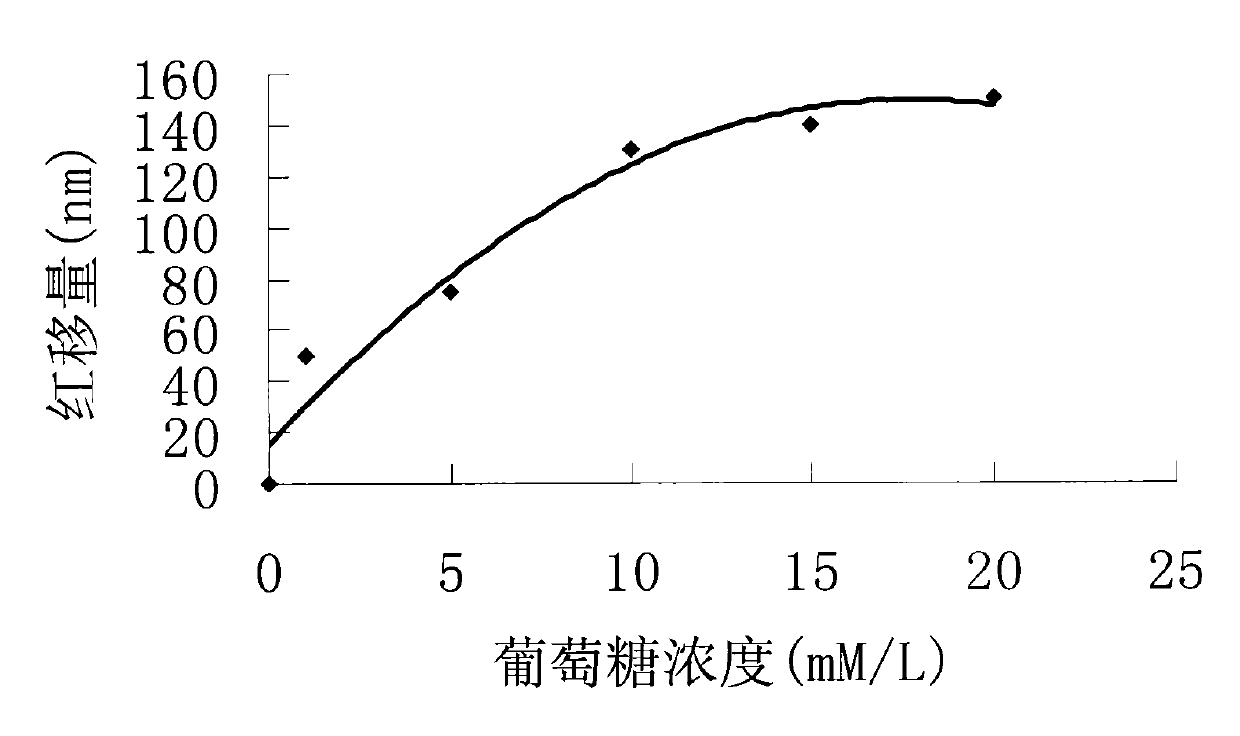Molecular imprinting photonic crystal for detecting glucose
A photonic crystal and molecular imprinting technology, applied in the field of applied chemistry and clinical analysis and testing, can solve the problems of complex steps, intrusion into the human body, and high cost, and achieve the effect of convenient detection.
- Summary
- Abstract
- Description
- Claims
- Application Information
AI Technical Summary
Problems solved by technology
Method used
Image
Examples
example 1
[0020] The synthesis method of the molecularly imprinted photonic crystal for glucose detection of the present invention, the specific steps are as follows:
[0021] 1. Place the slide in a beaker filled with 100mL deionized water and wash it ultrasonically for 5 minutes. Take another 250mL beaker, add 30mL of 30% H 2 o 2 And 70mL mass fraction is the concentrated sulfuric acid of 98%. Gently put the ultrasonically washed glass slides into the prepared mixed solution, soak for 12 hours, and wash the slides that have been treated with hydrophilicity three times with deionized water. Blow dry the cleaned substrate for later use.
[0022] 2. Take 280-300nm PMMA colloidal beads, dilute them with deionized water to a mass fraction of 1%, ultrasonically disperse them for 0.5h, and pour them into a large petri dish; Insert the sheet into the above-mentioned PMMA colloidal bead solution to ensure that the substrate is perpendicular to the horizontal plane of the solution; let it s...
example 2
[0027] The synthesis method of the molecularly imprinted photonic crystal for glucose detection of the present invention, the specific steps are as follows:
[0028] 1. Place the slide in a beaker filled with 200mL deionized water and wash it ultrasonically for 5 minutes. Take another 250mL beaker, add 30mL of 30% H 2 o 2 And 70mL mass fraction is the concentrated sulfuric acid of 98%. Gently put the ultrasonically washed glass slides into the prepared mixed solution, soak for 15 hours, and wash the slides with hydrophilic treatment five times with deionized water. Blow dry the cleaned substrate for later use.
[0029] 2. Take 280-300nm PMMA colloidal beads, dilute them with deionized water to a mass fraction of 1%, ultrasonically disperse them for 1 hour, and then pour them into a large petri dish; put the hydrophilized substrate prepared in the first step Insert it into the above PMMA colloidal bead solution to ensure that the substrate is perpendicular to the horizontal...
example 3
[0034] The synthesis method of the molecularly imprinted photonic crystal for glucose detection of the present invention, the specific steps are as follows:
[0035] 1. Place the slide in a beaker filled with 120mL deionized water and wash it ultrasonically for 10 minutes. Take another 250mL beaker, add 30mL of 30% H 2 o 2 And 70mL mass fraction is the concentrated sulfuric acid of 98%. Gently put the ultrasonically washed glass slides into the prepared mixed solution, soak for 13 hours, and wash the slides with hydrophilic treatment 4 times with deionized water. Blow dry the cleaned substrate for later use.
[0036] 2. Take 280-300nm PMMA colloidal beads, dilute them with deionized water to a mass fraction of 1%, ultrasonically disperse them for 0.5h, and pour them into a large petri dish; Insert the sheet into the above-mentioned PMMA colloidal bead solution to ensure that the substrate is perpendicular to the horizontal plane of the solution; let it stand at 32°C and 60...
PUM
 Login to View More
Login to View More Abstract
Description
Claims
Application Information
 Login to View More
Login to View More - R&D
- Intellectual Property
- Life Sciences
- Materials
- Tech Scout
- Unparalleled Data Quality
- Higher Quality Content
- 60% Fewer Hallucinations
Browse by: Latest US Patents, China's latest patents, Technical Efficacy Thesaurus, Application Domain, Technology Topic, Popular Technical Reports.
© 2025 PatSnap. All rights reserved.Legal|Privacy policy|Modern Slavery Act Transparency Statement|Sitemap|About US| Contact US: help@patsnap.com

